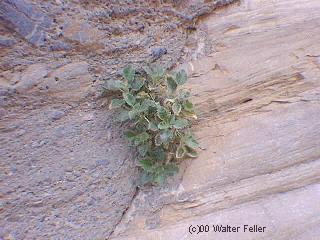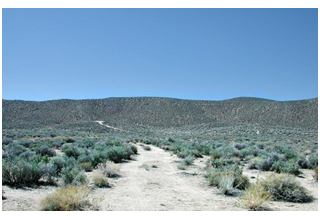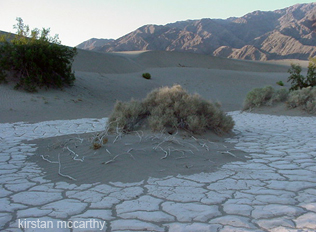Northern Panamint Region (NP)
Sites NP1-10 are all located in the northern Panamint Mountains or within an easy drive of the village of Stovepipe Wells. Therefore all locations are described in terms of their distance from Stovepipe Wells or road junctions easily accessible from Stovepipe Wells. Sites NP1, 7, 9 and 10 are all accessible directly via paved roads. Sites NP3, 5, 6 and 8 are accessible via well-graded dirt roads passable by vehicles with at least a little clearance. Sites NP2 and 4 require high clearance and usually four-wheel-drive. Since there are a great number of locations in this region, there is a great geologic variety to be seen at the sites. There is also a tremendous variety of climate at these sites and sites NP5-8 are quite pleasant even in summer.
NP1. Stovepipe Wells Dune Field
These dunes are generally transverse dunes with maximum heights of about 180 feet and with axes trending roughly southeast-northwest ...NP2. Grotto Canyon
There are several things worth noting at the end of the road. Just before the end, at the GPS coordinates, there are some wonderful ...NP3. Mosaic Canyon
The lower reaches of Mosaic Canyon have been cut through older alluvial fan deposits and the late Proterozoic Noonday formation ...NP4. Cottonwood Canyon
a. Canyon Mouth
The folding of the sedimentary rocks at the south end of the Grapevine Mountains is more obvious from here than along ...b. Cave
This is a quite unusual cave as it does not have a karst origin, i.e.: it wasn’t created by groundwater dissolution of ...c. Megabreccia
This site is very similar to Site GF2i in Titus Canyon except that this site is smaller and the breccia fragments are smaller and rounder. ...d. Faults/Spring deposits
At this location, there is a great deal of white travertine on the north canyon wall precipitated by spring action along several faults. ...NP5. Skidoo
The majority of rock that makes up the hill that the mill and most of the mines are on is composed of the Skidoo granite, a Mesozoic pluton. ...NP6. Aguereberry Point
En route from the pavement, you will travel over Quaternary gravels, past outcrops of the Mesozoic Skidoo granite and then through upper ...NP7. Stretch Pebble Conglomerate
This outcrop is mapped by Walker, et. Al. (2002) as part of the Proterozoic Kingston Peak formation. By the way, this is an excellent ...NP8. Charcoal Kilns/Mahogany Flat
With the exception of a few outcrops of Mesozoic granite outcropping on the left side of the valley as you ascend the alluvium, ...NP9. Wildrose Townsite
The rocks that dominate the canyon between here and the up-canyon ranger station are formations of the Proterozoic Pahrump Group ...NP10. Wildrose Graben
This very well known graben (down-dropped fault block) is about ¼ mile wide and about four miles long. ...


=-=